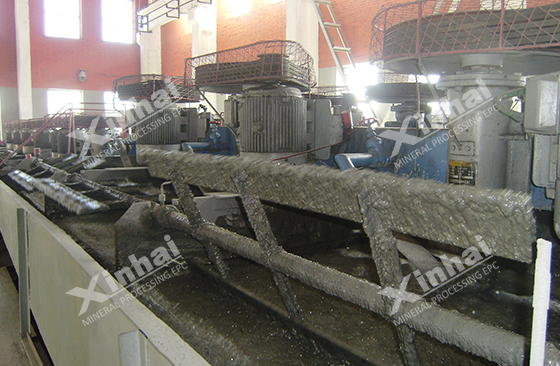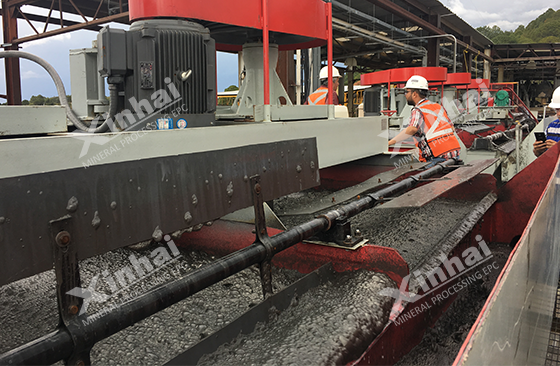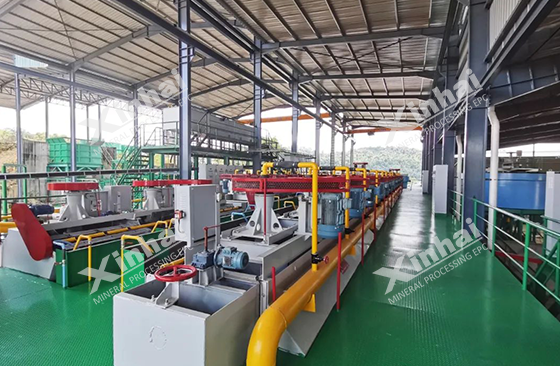The processing challenges of lead-zinc oxide ores not only stem from their complex ore composition, but also include the brittleness of the minerals, close symbiosis, and surface contamination. Especially when processing mixed ores, the activation effect of the secondary copper sulfide film further exacerbates these difficulties. These factors make it difficult for traditional mineral processing methods to achieve ideal separation effects. Therefore, understanding the root causes of these problems and exploring effective ways to improve process flow and reagent systems are crucial to improving the processing effect of lead-zinc oxide ores. Next, these challenges and their impacts will be analyzed in detail, and optimization suggestions will be proposed to address the current mineral processing problems.
Use the table of contents below to navigate through the guide:
01Complex composition of oxidized lead-zinc ore

The material composition of oxidized lead-zinc ore is complex, containing a variety of soluble salts and oxides, which makes the flotation operation difficult to control and the flotation effect poor. Gypsum-soluble salts in the slurry will form precipitation, cover the surface of the mineral, hinder the in-depth sulfidation reaction, and affect the flotation effect. In addition, the mudification of ore mud and ochre pollutes the flotation foam, reduces the grade of valuable metals in the product, increases the difficulty of smelting, and leads to a decrease in smelting recovery. The adsorption of sulfiding agents and collectors by ore mud further limits the flotation efficiency of oxidized ore.
02Oxidized lead-zinc ore is brittle
Oxidized lead-zinc ore is brittle in nature and is often embedded with other oxidized minerals and gangue minerals in the form of extremely fine particles. Therefore, it is difficult to completely dissociate it into monomers through grinding operations. This not only causes over-crushing of oxidized ore during fine grinding, making it difficult to recover mineral particles and increasing mineral losses, but may also cause excessive wear of grinding equipment and increase energy consumption, further affecting the overall mineral processing efficiency.

03Many valuable minerals in lead oxide ore
Lead oxide ore contains a variety of minerals with industrial value. Usually, two or more lead oxide minerals may exist in the same deposit at the same time. Since the sulfidation and flotation properties of each oxide mineral are different, they have different requirements for flotation conditions. This complexity not only makes the flotation process more complicated and difficult to adjust, but also increases the difficulty of control, further affecting the effect and stability of mineral processing. Therefore, it is very important to make fine adjustments to the flotation conditions for different minerals to ensure maximum lead-zinc mineral processing efficiency.

04Zinc oxide mineral surfaces are susceptible to contamination
The surface of zinc oxide minerals is often contaminated by iron oxide, which reduces its original flotation performance. Solutions of zinc sulfate and iron sulfate react with alkaline earth metal carbonates to form iron smithsonite. When iron smithsonite comes into contact with appropriate ions in groundwater or flotation water, it decomposes to form smithsonite and iron hydroxide. The iron hydroxide then deposits on the surface of the smithsonite, forming a layer that further contaminates the mineral surface and reduces its flotation performance. To improve flotation results, these contaminants need to be effectively removed and lead-zinc flotation conditions optimized to suit different mineral characteristics.

05Tightly symbiotic lead-zinc oxidized minerals
The lead-zinc oxidized minerals often exist in a tightly symbiotic form, which is often difficult to completely dissociate economically and technically. In addition, a portion of the lead-zinc minerals will form solid solutions with iron, embedded in the crystal lattice of gangue minerals, or adsorbed on the ion exchange layer of clay minerals. This solid solution and adsorption phenomenon increases the complexity of the minerals, making it more difficult to separate the lead-zinc minerals during flotation. Therefore, special technical measures are required to handle these complex mineral combinations to improve the beneficiation effect.

The treatment of lead-zinc oxide ores faces multiple challenges, including complex mineral composition, brittle mineral properties, close mineral symbiosis, and surface contamination. These factors make flotation operations difficult to control, minerals difficult to completely dissociate, and mineral loss and contamination are prone to occur during the treatment process. Traditional mineral processing methods are not effective when faced with the activation effect of secondary copper sulfide films. To improve the treatment effect, it is necessary to improve the process flow and reagent system and optimize them according to different ore characteristics.


 marketing@ytxinhai.com
marketing@ytxinhai.com  0086 13810327080
0086 13810327080 






































































































 CHAT
CHAT MESSAGE
MESSAGE







